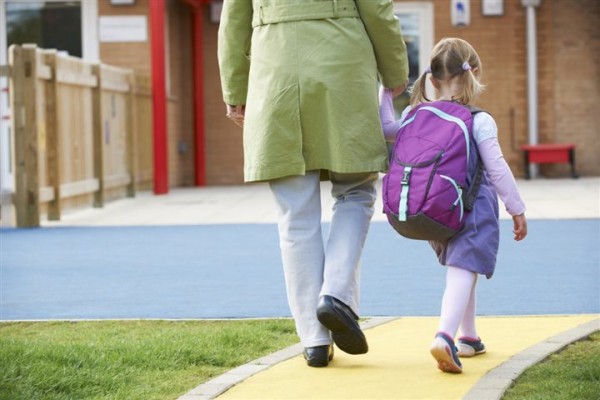 (BPT) – Back-to-school time isn’t just for the backpack-and-pencil-box crowd. With the season’s new routines, it can also be a challenge for babies, toddlers and even parents.
(BPT) – Back-to-school time isn’t just for the backpack-and-pencil-box crowd. With the season’s new routines, it can also be a challenge for babies, toddlers and even parents.
Whether your child is graduating from the infant room to the toddler room, starting a new tumbling class or stepping into school for the very first time, change is a big deal for little ones. Here are six ways to make for an easier transition in the months and years to come.
1. Know that change is good. Great, even.
Leaves aren’t the only things changing this fall. Summer vacations are over, picnics in the park become more rare and days are filled with new friends, places and expectations.
Change can be stressful at any age, but it can be especially difficult for babies and young children who thrive on predictable routines and have a hard time understanding why things are different. Fortunately, new environments pique kids’ curiosity, invite problem-solving, teach resilience and foster flexibility. All of these are key factors for success in school, not to mention life.
2. Be a super-model.
You are your child’s first teacher, and they’ll look to you for how to respond in new situations. “Most parents are nervous about leaving their child in an unfamiliar setting,” says Linda Hassan-Anderson, vice president of Education at KinderCare Learning Centers, a national early childhood education leader. “Since they get their cues from you, the more you model confidence, the more comfortable your child will be.”
Hassan-Anderson also recommends bringing your child in before daycare or preschool starts to become familiar with the classroom while it’s quiet. There, you can support the teacher as she helps your child find their cubby, and reinforce that everything is going to be just fine. And don’t be afraid to ask the teacher for guidance and updates about how your child is adjusting.
“You’re forging a new path,” Hassan-Anderson says. “It’s nice to have a guide to help lead the way.”
3. Make sure extra-curricular doesn’t equal extra-stressful.
It’s tempting to sign up little Riley for Mommy and Me, Kindermusik and dance, but over-scheduling can mean over-tired and over-stimulated.
“Start with small doses and look for activities you can add after fall routines and schedules are established,” suggests Hassan-Anderson. “Involve your child in choosing an activity that he or she is interested in.”
Have multiple children? Minimize running around by choosing programs that offer a variety of activities on-site or that siblings can participate in together.
4. Set the stage.
Part of what makes change so anxiety-producing is that big bad beast: the unknown. Letting your child know what to expect at school and with extra-curricular activities can help tame the beast. Describe what a new activity will look like with kid-focused details. Say things to your child, such as, “We usually have a snack at home, but today we’re having it in the car because you have Busy Buddies.” Highlight anything that’s familiar like a friend or setting. Let your child know where you’ll be and how you can be reached. If you dash out to the store during tumbling, return on time. Five minutes is an eternity to a child waiting to be picked up, particularly when their friends start heading home.
5. Don’t lose sleep.
Consistency is king for kids, and keeping bedtime the same during vacations and weekends makes for more peaceful mornings and less drama-filled days. An easy trick: plan your day by planning back from bedtime to keep precious sleep a priority. After all, sometimes backwards planning makes for forward thinking.
6. Keep talking.
Keeping the lines of communication open is important now and in the future. Acknowledge your child’s feelings. Allow them to express themselves. Help them come up with strategies for handling difficult emotions. And keep younger siblings in the loop. Talking about big brother or sis going to school will help prevent little ones from feeling left behind when that first school bell rings.
Fall is a season of change. And while trees blaze with red and orange and crinkly leaves crunch underfoot, you can help your child navigate their latest life changes with your patience and support. Falling in love with fall has never been easier.

